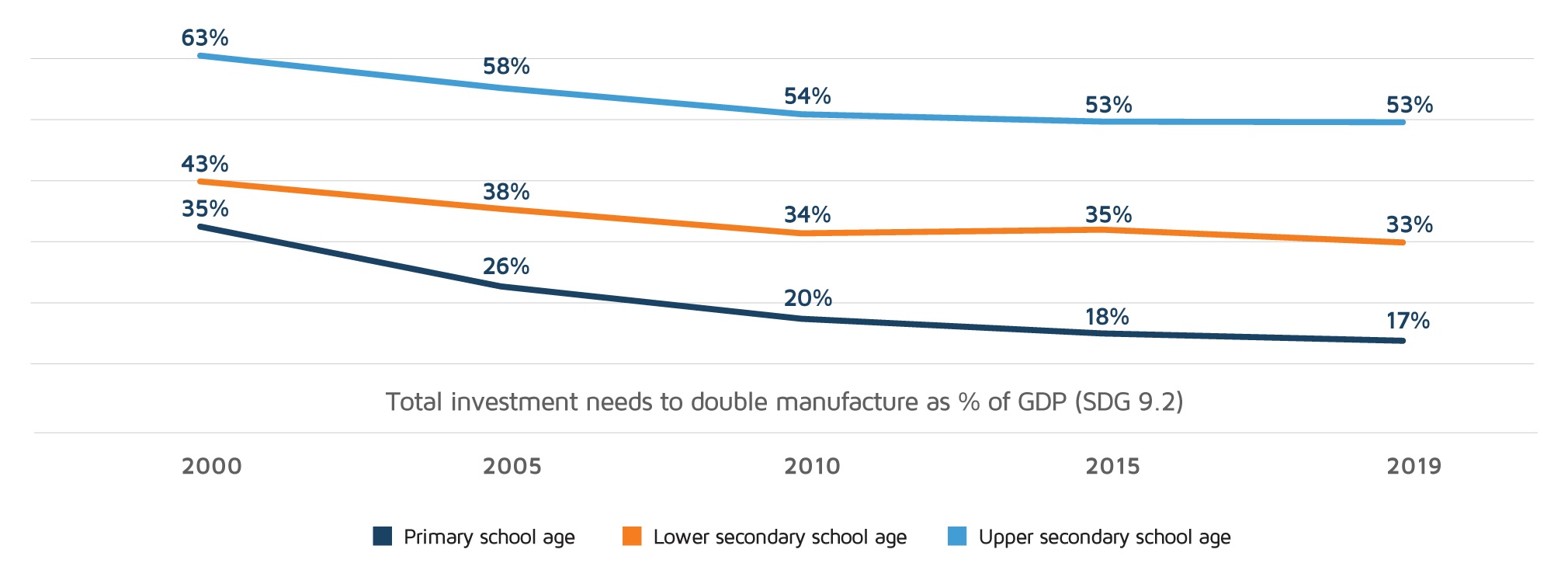By 2050, Africa will be the continent with the youngest population as 40% of all children and adolescents on Earth will be living there. This rapid demographic change could play a crucial role in the development of Africa. However, figures concerning school inclusion now put this prospect into doubt. A recent UNICEF report shows that in 2019, 105 million African children did not receive primary and secondary school education. Should this trend continue, it will take Africa about 200 years to ensure full school enrollment.
The newly released report titled “Transforming Education in Africa: An evidence-based overview and recommendations for long-term improvements” reveals that by 2019 the number of primary-school-age children who were out of school declined considerably in Africa, reaching 17% compared to 35% in 2000.
Fig.1. Share of out-of-school children in Africa by age group

However, despite this progress, the overall number of children out of school has increased since 2010 due to poor enrollment in secondary school education. Overall, since 2000, the number of secondary-school-age children out of school has increased by 12 million while the number of primary-school-age children out of school has decreased by 11 million.
Fig.2. Numbers of out-of-school children in Africa, 2000 – 2019

Estimates show that, if the percentage of children out of school remains unchanged, it will take around 100 years to ensure school enrollment for all primary-school-age children and 235 and 280 years, respectively, to reach full school attendance among lower and upper secondary-school-age children. At the same time, school inclusion varies drastically across countries in Africa, with Western Africa being the region with the highest rate of children out of school where two out of five children not enrolled in school.
Education amid the pandemic
The coronavirus pandemic that, among other impacts, pushed countries into lockdown has introduced novel challenges for the education sector.
Various African countries, in response to the new obstacles, introduced digital education programs to continue the education of children remotely. However, this new approach exacerbated the learning crisis, pushing vulnerable groups beyond access to education. Estimates show that 121 million children (50% of children) in sub-Saharan Africa were actually left without access to digital learning because of either the lack of policies to support remote education or the absence of the technologies necessary for remote learning.
Potential for growth
Projections show that by 2050 Africa will be home to a billion children and teenagers below 18 years of age. This rapid demographic growth offers great potential for the continent, as human capital forms the basis of economic growth.
The report’s authors specified that in order to benefit from the population growth, countries should focus on foundation and early age education, make schools a safe place, make education inclusive for all, and invest in resilient education systems. Furthermore, countries should keep their eyes on the future by prioritizing the teaching of digital skills in schools and by investing in teacher training and development.

